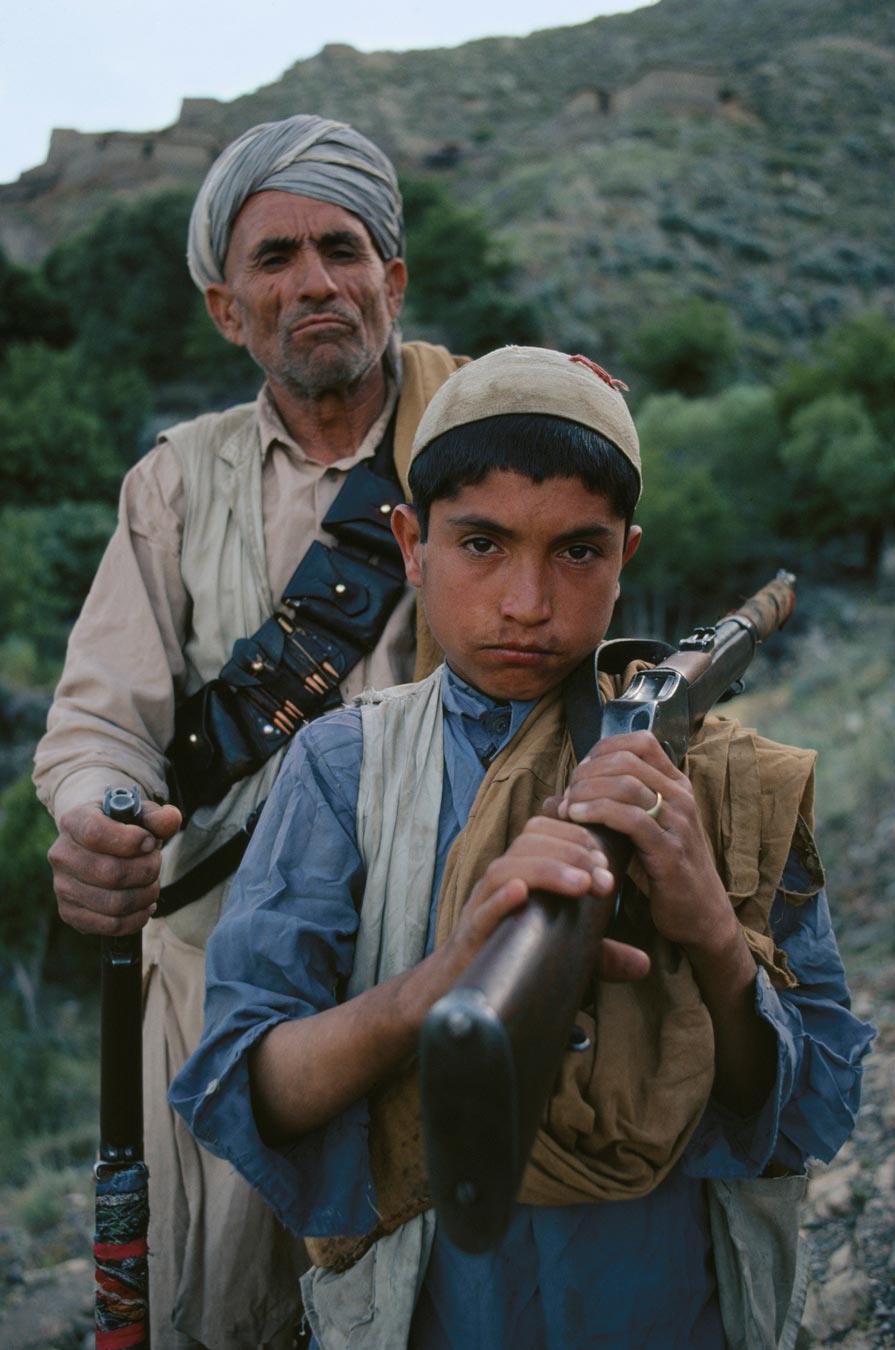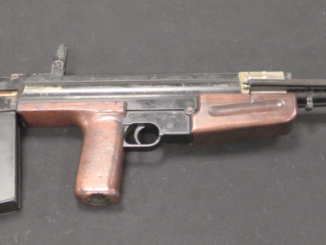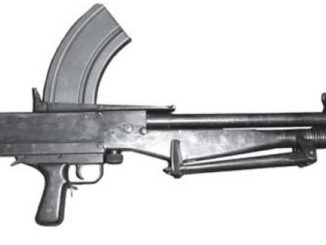The final standard pattern of the venerable Lee Enfield as a standard-issue service rifle was the No4 MkII, introduced after the end of World War Two. The new pattern was adopted to resolve problems that had come about because of wartime simplifications to the rifle. Specifically, the use of kiln-dried wood for stocks. On the original No4 design, the trigger was pinned to the trigger guard, which was in turn connected to the front handguard. The sear was pinned to the receiver. If the handguard swelled, shrank, or warped (which was much more likely on the quickly kiln-dried stocks used during the war, compared to the naturally dried pre-war wood), the trigger/sear interaction could be impacted.
To solve this, the receiver was changed slightly to include a boss for attaching the trigger. This kept both the trigger and sear pinned to the (metal) receiver, and stock shifting was not longer a problem. In addition, a change was also made to remove the boss originally intended for mounting the magazine cutoff lever, so that No4 rifles would be made using No5 receiver forgings (this change did not result in a new rifle designation).
Many existing rifles were refitted to the new standard, with upgraded MkI rifles becoming Mk I/2 and upgraded MkI* rifles becoming MkI/3.




Armor historian Nicholas Moran of “The Chieftain’s Hatch” with a surprising SMLE testimonial in:
https://www.youtube.com/watch?v=8tjns8_i5SQ
at 1:01:38. He owns a 1957 Fazerkely rifle made for the RAF!
I have one of the first Rifle, Number 8 (single shot .22 LR trainer) made by Fazakerly in 1949 — it also uses a Number 5 receiver, probably a “left over” one. Production of the Number 8 switched to purpose-made receivers a bit later.
My brother once owned a Long Branch made MK.2. The thing shot as a Swedish Mauser. Really the best bolt-action battle rifle ever fielded.
As has been said about bolt action rifles in the world wars: the Germans brought a hunting rifle, the American brought a target rifle, and the British brought a battle rifle.
Hands down my favorite military rifle, and the No.4 Mk.2 was the best of them all.
Sure, it could have been in a better (rimless) cartridge, but for a cartridge that started out in 1889, it’s pretty darn good!
The swelling problem makes me wonder if one of the backroom boys at ROF Enfield Lock wasn’t playing around with synthetic furniture in the Fifties. When I reported to my ROTC unit’s arms room in the Autumn of 1970, everybody was issued a synthetic stocked M14 (the only wooden stocked examples were about two dozen reserved for the drill team and only used in competition – they positively oozed linseed oil). I remarked to my roomie one day how neat they looked and our arms room NCO, a veteran of Korea and Vietnam, overheard me and told us how the Army and Marines restocked almost all their M14’s with “plastic” stocks when they developed swelling problems in the heat and humidity of RVN. Years later, I bought a black “plastic” stock for my CMP M1 – here’s an example of one – never had a problem with its functioning and, yes, I’ve held onto the wooden furniture should I ever decide to go retro
https://www.guns.com/firearms/rifles/semi-auto/springfield-armory-m1-garand-(with-synthetic-stock)-30-06-semi-auto-7-rounds-24-barrel-9-2-lbs-used?p=39663&soldout=1
So they kept modifying a bolt action rifle when there were so many good semi-auto rifles around. Yes, I know, the .303 rifle supposedly beat everyone else hands down. Yet That may have been in WWI. Post-WWII, what was the excuse? Rimless and semi-rimmed rounds are superior to rimmed rounds for pure functions across the board.
Rimmed rounds? The Russians are still fielding rimmed 7.62x54R ammo for their new semi-auto Chukavin sniper rifle, along with two other calibers. It’s their .30-06…
Long time ago I read a book from a Lee Enfield technician, stating that the the change was not made to eliminate the changing trigger pull due to wood changes, although it helped. But setting up the correct 1st and second trigger pull involved an experienced person and test fitting the stock after each small change. By pinning the trigger to the metal part the job was much easier/faster and could be done by a less experienced peson.
My No. 4 Mk. 2 rifle is one number away from the one in the video. PF309168
I have a #4 MKII made at Faz in ’48… Good metal, somewhat used wood, original sling… probably the most accurate mil-surp I’ve owned, with the possible exception of my old Swede Mauser. It outshot my ’43 Remington 03-A3 in informal match shooting- both rifles being in similar shape, with the Enfield maybe a bit more worn but obviously well cared for. I think it sat in some Old Guy’s closet for years in our desert climate before his widow sold it off. I liked how it shoots so much I got dies and shell cases and set up reloading for it. Now it sits in (my) Old Guy closet until my Old Woman ;>) (hopefully) sells it off along with the bayo and boxed Lend-Lease ammo that came with it.